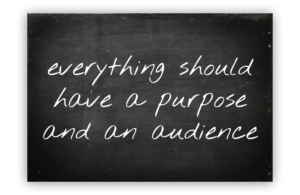
No mystery here. Traditional grading practices are insufficient and rapidly changing (see this NCSL 2017 article). One of the swiftly rising challenges continues to be collecting, organizing, and sharing student work that represents the demonstration of learning needed in a more mastery-focused model.
Let me make the case for a student portfolio strategy that might just be one of the best solutions for this problem.
Digital Portfolios
A folder or binder won’t cut it. In fact, even a digital folder (think: Google Drive) just doesn’t achieve the desired results. Here’s why: the portfolio serves two functions, (1) a location to document and store student work and (2) a platform to broadcast and share student work.
As David Theune is often heard saying, everything should have a purpose and an audience. And without the audience, chances are the purpose loses impact.
Using Google Sites
If I have convinced you (or you already believed) that digital portfolios are the way to go, consider this strategy: Google Sites created and managed by students. In short:
- Students individually create Google Sites (from Drive) that are shared publicly.
- Students post work to sites (organized with pages for subjects or topics or grades, etc.).
- Students share sites with a wide array of audiences (parents, other students, community, etc.) for feedback, celebration, and collaboration.
It is a website, so students can post very nearly any modality (raw text, Google docs/slides/etc., audio files, videos, images… pretty much anything). Additionally, they can make it interactive by including embedded content from sites like Flipgrid, Padlet, Ziteboard, Google Forms, and more. Have students post work and reflect in a video about the experience of creating the work or learning the concept. Have students ask for feedback with Google Forms. Have students view others’ portfolios to challenge their own thinking and consider new ways they might demonstrate it.
If the goal is to demonstrate learning in dynamic ways and organize and share those demonstrations effectively, few strategies will meet the need better and do so with more flexibility and user-friendliness.
Worried your students can’t handle the technology? Here’s my challenge: give them the chance to prove you wrong. I’m betting they will.


